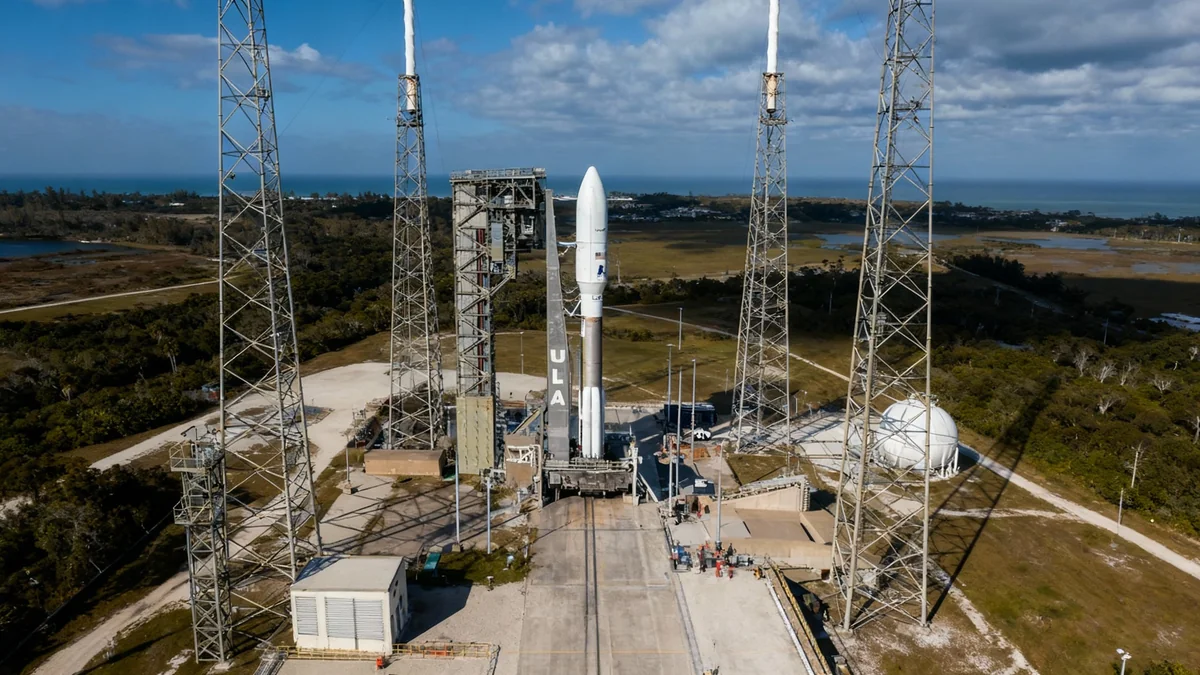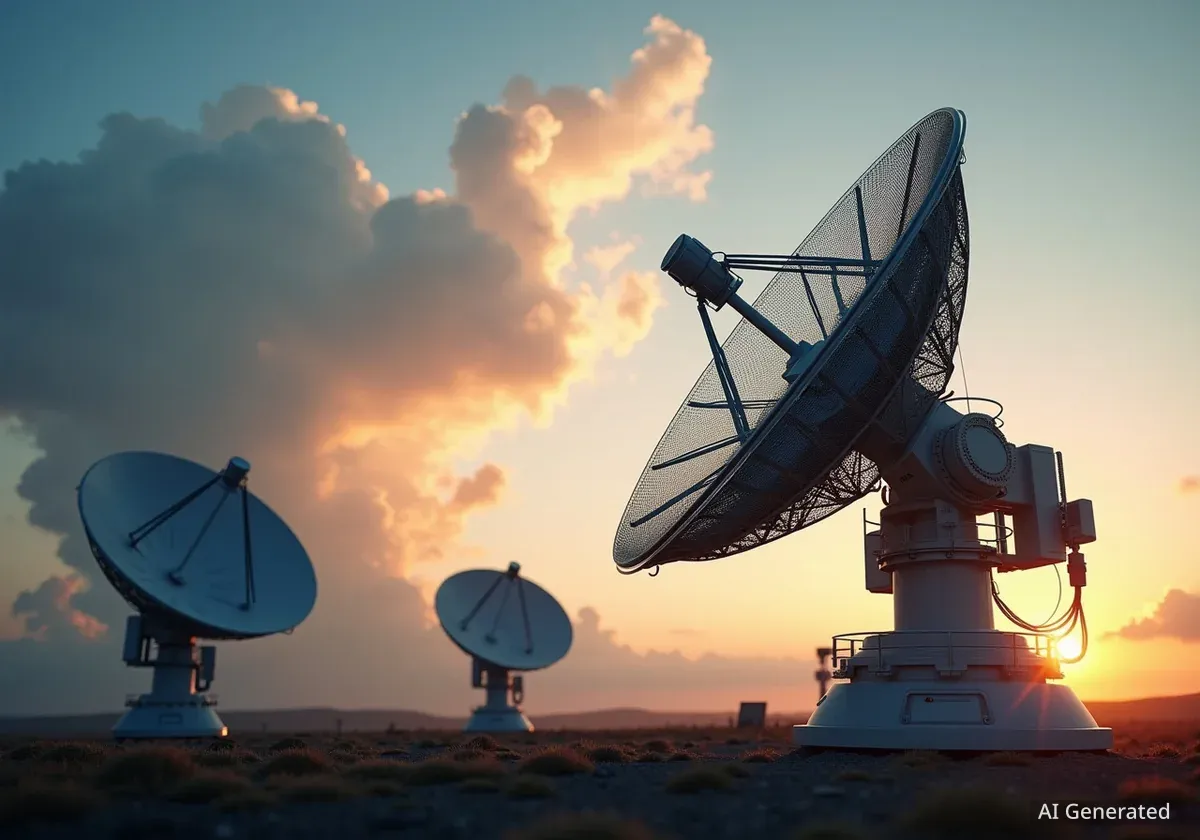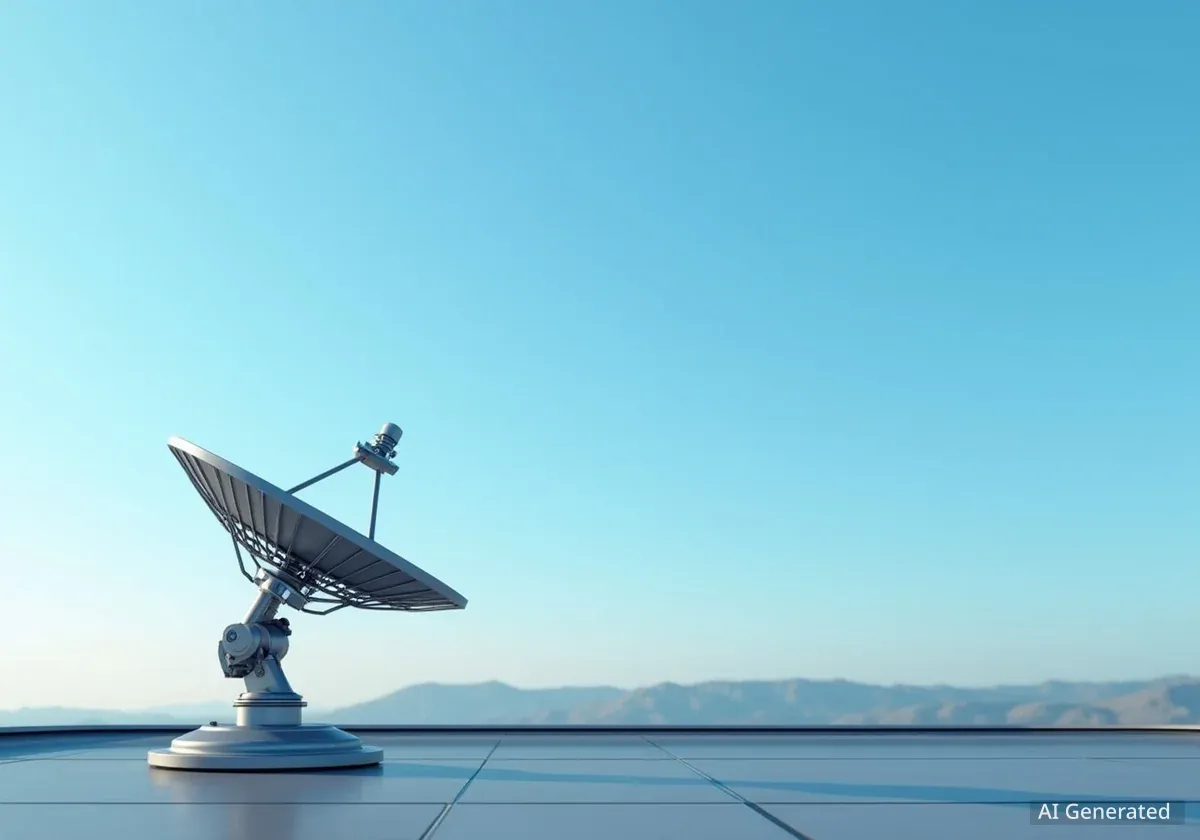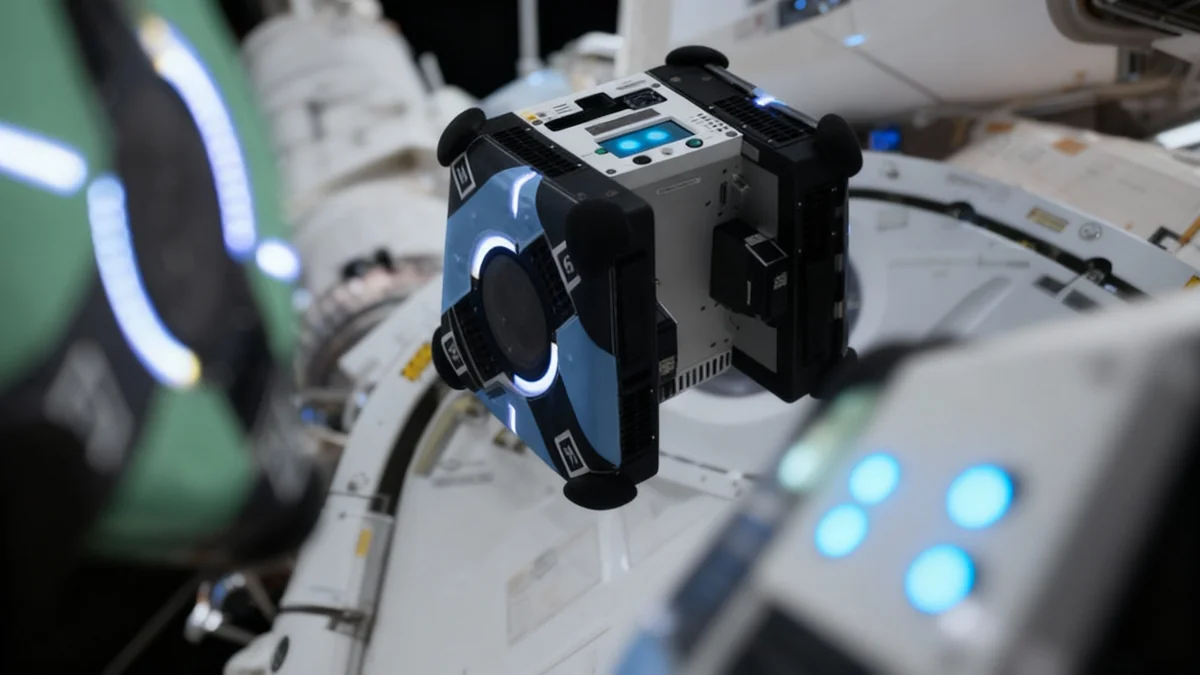United Launch Alliance is preparing for a second attempt to launch its Atlas 5 rocket from Cape Canaveral, but faces challenging weather conditions. The mission, carrying the high-capacity ViaSat-3 F2 communications satellite, was previously scrubbed due to a technical issue with a valve on the rocket's first stage.
Officials are now targeting a 10:16 p.m. EST liftoff on November 6, but the forecast presents only a 50% chance of favorable conditions, with thick clouds and rain showers posing a significant threat to the launch schedule.
Key Takeaways
- ULA is attempting a second launch for the ViaSat-3 F2 satellite after a technical scrub.
- The launch window opens at 10:16 p.m. EST from Cape Canaveral Space Force Station.
- Weather is a major concern, with forecasters giving only 50-50 odds for favorable conditions.
- The satellite aims to add over 1 terabit per second of internet capacity over the Americas.
Second Attempt Amid Technical and Weather Hurdles
Engineers and launch controllers at Cape Canaveral are working through a countdown for the second time in as many days. The initial launch attempt on Wednesday night was halted during final checkouts when a vent valve on the Atlas 5's liquid oxygen tank failed to operate as expected.
United Launch Alliance has not released detailed information regarding the successful resolution of the valve problem, but proceeding with a new countdown indicates that troubleshooting efforts have been completed. The focus has now shifted from hardware to the skies above the Florida spaceport.
Launch at a Glance
- Rocket: ULA Atlas 5 (551 configuration)
- Payload: ViaSat-3 F2 Satellite
- Launch Site: SLC-41, Cape Canaveral, Florida
- Target Time: 10:16 p.m. EST, Nov. 6, 2025
- Weather Chance: 50% GO
Launch Weather Officer Brian Belson of the 45th Weather Squadron has downgraded the forecast, citing thick cloud layers and persistent rain as the primary concerns that could violate launch criteria. The launch team will closely monitor atmospheric conditions throughout the 44-minute launch window.
A Critical Payload for Global Connectivity
Secured inside the rocket's 5.4-meter payload fairing is the ViaSat-3 F2 satellite, a 6-metric-ton spacecraft built by Boeing. This satellite is the second in a planned constellation designed to significantly boost global internet bandwidth from space.
The mission holds particular importance for Viasat following challenges with the first satellite in the series. The ViaSat-3 F1, launched in 2023, experienced an issue with its large antenna during deployment, which impacted its performance. The successful launch and operation of F2 are crucial for the company's network expansion plans.
Once operational, ViaSat-3 F2 is expected to add more than 1 terabit per second (Tbps) of network capacity, primarily serving North and South America with high-speed Ka-band connectivity.
After its launch, the satellite will undergo several months of on-orbit testing. Viasat anticipates the spacecraft will officially enter service in early 2026, operating from its orbital slot at 79 degrees West longitude.
A Pattern of Delays
Recent ULA missions have faced similar setbacks. In May 2024, the first crewed flight of Boeing's Starliner spacecraft was delayed after an oxygen relief valve on the Atlas 5's Centaur upper stage exhibited unusual behavior. That issue required the rocket to be rolled back from the pad for replacement. Additionally, a planned launch of Kuiper satellites in April 2025 was scrubbed due to poor weather, highlighting the persistent challenges of launching from Florida.
The Atlas 5's Complex Flight Plan
The Atlas 5 rocket, flying in its powerful 551 configuration with five solid rocket boosters, is tasked with a demanding flight profile. The rocket's Centaur upper stage must perform three separate engine burns to deliver the heavy satellite to its intended orbit.
The final burn will utilize a technique known as a Minimum Residual Shutdown. This maneuver is designed to burn the Centaur's propellant nearly to depletion, imparting the maximum possible velocity to the ViaSat-3 satellite as it separates from the rocket.
This high-energy trajectory places the satellite into a geosynchronous transfer orbit that is optimized to reduce the amount of onboard fuel the satellite must use to reach its final position. By saving its own propellant, the satellite can potentially operate for a longer period, extending the return on a significant investment.
The entire deployment sequence, from liftoff to satellite separation, is expected to last approximately 3.5 hours. Mission success hinges on the flawless performance of the Atlas 5, the resolution of the valve issue, and cooperation from the weather over Cape Canaveral.





